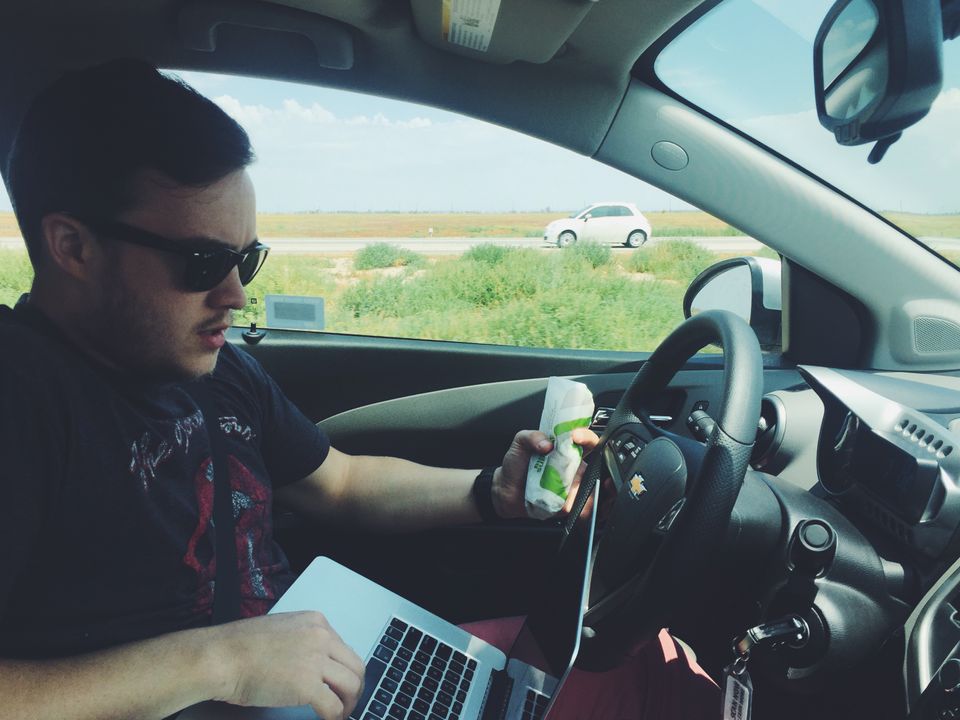Remote Work after the Pandemic

For over the past year, many of us have been working remotely. Thanks to the prevalence of vaccines, the pandemic is starting to come to a close. Many companies are coming to an inflection point: do we make people come back into the office? Have we become more open to remote work? Or have we learned nothing?
I wrote that over a year ago thinking we might get out of this thing soon. Clearly, I didn't get much further than the paragraph above, likely because the pandemic isn't really over. Plus I'm terrible at predicting the future. I still haven't won that lottery mega jackpot.
The world feels more open to remote work than before--especially tech. They simply didn't have a choice. Office employees were forced out of their offices and told to work from home. Some companies handled this really well and are thriving with remote work, while others truly struggled.
During the beginning of the pandemic, this is what happened to Zoom's stock:

It hockey sticked. Companies who couldn't meet in person were doing the same amount of meetings--if not more--via Zoom. So the transition was "easier". They didn't have to change the way they operated. They could meet all the time. No more car issues, traffic, or being late to office. People's office was a 30 second walk to wherever their laptop was. And that's sort of the problem. It became too easy to meet whenever, wherever. It became... tedious.
Bailenson notes that in regular face-to-face interaction, nonverbal communication is quite natural and each of us naturally makes and interprets gestures and nonverbal cues subconsciously. But in video chats, we have to work harder to send and receive signals. [VIGNESH RAMACHANDRAN of Stanford]
Communication is more necessary during remote work, but Zoom and video meetings isn't the always solution. Companies who have embraced asynchronous work thrived during the peak of the pandemic while working remotely.
...asynchronous communication allows someone to respond when it’s most convenient for them. When you create a task in Trello, for instance, it contains information about the work that needs to happen, including who it's been assigned to. This person can take a look at their convenience and follow up when it works best for them. This means fewer interruptions and more time to focus on important tasks. [Kenzo Fong for Forbes]
Async communication isn't all peachy. While for developers it's hard to measure productivity, being present is an indication of being "at work". Status indicators became a slippery slope. The green status icon, "butts in seats", and the 9-5 falls apart with remote work if productivity is the goal.
Many chat platforms put a little green dot next to people telling you they are online/available. That’s called presence, and it’s worse than you might expect. It’s professional pressure to stay logged into chat. It’s saying “if you aren’t green, you aren’t at work”. Quitting chat suggests you aren’t part of the group. And that pressure forces you to keep a chat room open all day. Which forces you to absorb the blows of all-day distractions while you’re trying to actually get the work done you’re supposed to be doing. It’s just a modern version of the outdated butts in seats. Sure you can say do not disturb, but the true version of do not disturb is quitting the app. [Jason Fried]
This pressure to always "be online" has caused a cavalcade of videos of employees rube-goldberging their computer to always "be online."
@leahova It's called mental health, Janice. Look it up. #wfh #workfromhome #corporatetiktok #worklifebalance ♬ original sound - Leah
The fear and pressure of always being online is parallel to the anxiety of not working. If you appear offline, idle, or away, you're "not working." This isn't true of everyone at a company, but more likely than not: people believe it to be true. In a truly asynchronous world, presence icons wouldn't matter. You would get stuff done however you see fit and things would be good. Instead of being productive, remote employees, especially those who are in traditional office jobs, fear they can't make that jump because their employer doesn't trust them to get stuff done, they need to do it when others are looking.
Imagine someone standing over your shoulder all day long while you try to work. If they stop watching, you might do something not work related. It's exhausting. That lack of trust is harmful for everyone. Work doesn't always happen when people are watching. it often happens when no one is watching.
Remote jobs are more prevalent than ever before. Companies are very likely to keep remote as an option. It's got plenty of benefits such as shorter commutes, savings on gas, no traffic or wasted time in the mornings, and letting you work from anywhere. In all of the surveys I've been involved with, the main reason people would come back to the office is to see their colleagues again. Maybe the office should be rethought of as a place to meet up with colleagues, build rapports, and comradery? [1]
So here we are. Not one, but two years into a global pandemic. The world looks different for office workers. More than 60% of companies went remote during the pandemic. So many of them were new to remote work. They treat it like you're still in the office and haven't really figured it out. Meetings increased to the point of Zoom Fatigue. Companies increased the amount of spying done on their employees to the point where they don't feel trusted. Offices aren't seeing much use. Many offices have become unnecessary and most importantly: employees are quitting their jobs more than any time over the past 20 years.
It would be cool if we re-thought of offices like this. Or perhaps, a monthly meetup where food is provided? That could be a cool perk. ↩︎
P.S. You should check out some of the threads over on my Substack. You can reply to threads/topics over there that help inspire my next topic:)

Member discussion